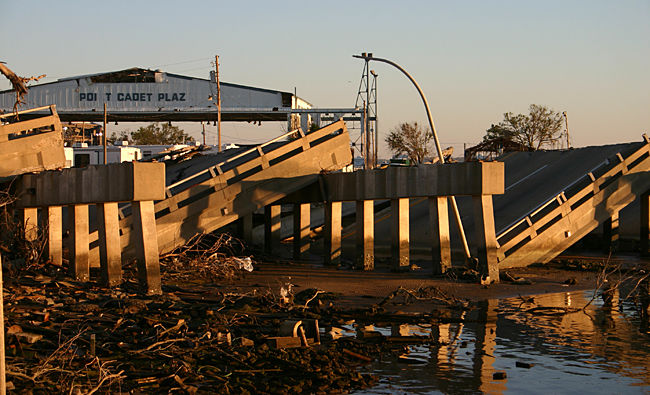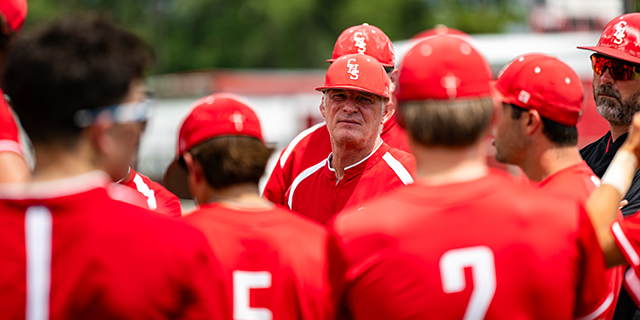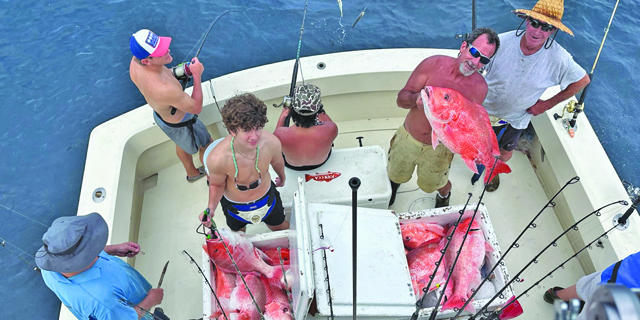True stories from a storm chaser
Published 7:00 am Wednesday, June 26, 2019

- hurricane
As a storm chaser, David Landry has always been infatuated with extreme weather. He recalls the moment he became hooked saying, “It was during Hurricane Hilda; the winds were so strong that the men in our house had to hold up the picture window. That’s what really cinched it for me.”
It wouldn’t be until the early ‘90s before the retired restaurant owner actually became a chaser of, specifically, hurricanes. Every year, from June to November, Landry follows developing hurricanes threatening the Gulf coast from Texas to the Florida Panhandle as far as the Tallahassee vicinity. “I’ll look at the forecast and if it’s a hurricane of 100 mph winds or stronger, I’m going to plan a trip,” he nods.
Before leaving his home, he knows where he’ll be staying – even the structure of the hotel. Of course, there are provisions: 10 extra gallons of gas, snacks, a couple gallons of waters, an ice chest of refreshments, battery-operated lights and extra clothes (because getting wet is inevitable.)
To stay ahead of the storm, he heads out the day before, always traveling on the left side of its path, in a neighboring city. On a couple occasions, he’s arrived a couple of hours shy of landfall. “There’s no one on the road when you’re traveling towards a storm,” he laughs.
Of course, there is a trove of memories associated with each of the storms – Harvey, Katrina, Ivan…and Michael, the strongest one he’s experienced.
He arrived in Marianna, Fla. the day before Hurricane Michael rolled in, which was around 3pm on October 10. He doesn’t need his video clip to remember as he recounts, “The eye wall ramped up for about an hour packing a wind of 150 mph, to the point where you literally couldn’t see a thing – it was white – and then the eye of the storm came and everything calmed to nothing but a slight mist for nearly 40 minutes. After that, the wind cranked up to 150 mph again, bending the hotel’s sign post to an L shape like it wasn’t made of steel. Roofs were being peeled off like they were card houses. The wind sounded as powerful as I would imagine the voice of God to be. Michael hit land as a strong category 4, and by the end it was upgraded to a category 5. Residents didn’t take the intensity of that hurricane seriously enough. It took me two days to get home because I-10 was closed with trees everywhere.”
Landry says Lafayette meteorologists are “top-notch,” but he does refer to other sources, particularly the weather channel, Storm2K.org. and, for storm surge updates, the National Hurricane Center in Miami.
While he would like to see a storm surge one day, he’s very careful not to get caught in the throes of one. “If a storm surge is predicted for 10 to 20 feet, I’ll check GPS elevation levels and make sure I’m at least 10 feet higher,” he says. For Katrina, that meant staying in Covington.
If there’s one sure thing about the weather, it’s that it is not predictable. Many examples in history prove that to be true.
Hurricane Andrew occurred during what was predicted to be a “slow season.” Hurricane Nate’s strength died out by the time Landry reached Biloxi sending him home before daylight. Then there was Hurricane Elena that deviated from its forecasted path so many times that it triggered evacuations that had never be seen before. Landry keeps close tabs on the storms in case he has to quickly move out of their paths.
Storm chasing is adrenalin pumping; it’s possibly spending seven hours on the interstate, as Landry has had to do; it’s being without electricity or a hot meal for a couple days- or longer. Landry can only explain the fascination by exclaiming, “You have to really love bad weather!”
Advice From a Storm Chaser
– Cover windows and secure garage doors. Landry says garage doors are the weakest link in a house. Once the garage door is damaged, allowing wind to come into the house, the roof is susceptible to coming off. YouTube provides helpful how-to videos on hurricane proofing garage doors, which can be as simple as using two 2 x 4s.
– Don’t run generators in a garage or so close to the house that carbon monoxide could go into the home. Buy a carbon monoxide tester.
4 Storms Landry has Chased
– Hurricane Harvey
- October 17, 2017
- Category 4
- Harvey is tied with Katrina as the costliest tropical cyclone on record
– Hurricane Michael
- October 6, 2018
- Category 5
- Michael was the first Category 5 storm to strike the contiguous U.S. since Andrew in 1992
– Hurricane Katrina
- August 23, 2005
- Category 3 at landfall
- 1,833 fatalities and $125 billion in damages are associated with Katrina
– Hurricane Ivan
- September 2, 2004
- Category 3 at landfall
- Ivan formed on September 2, 2004 and dissipated on September 25, 2004.





